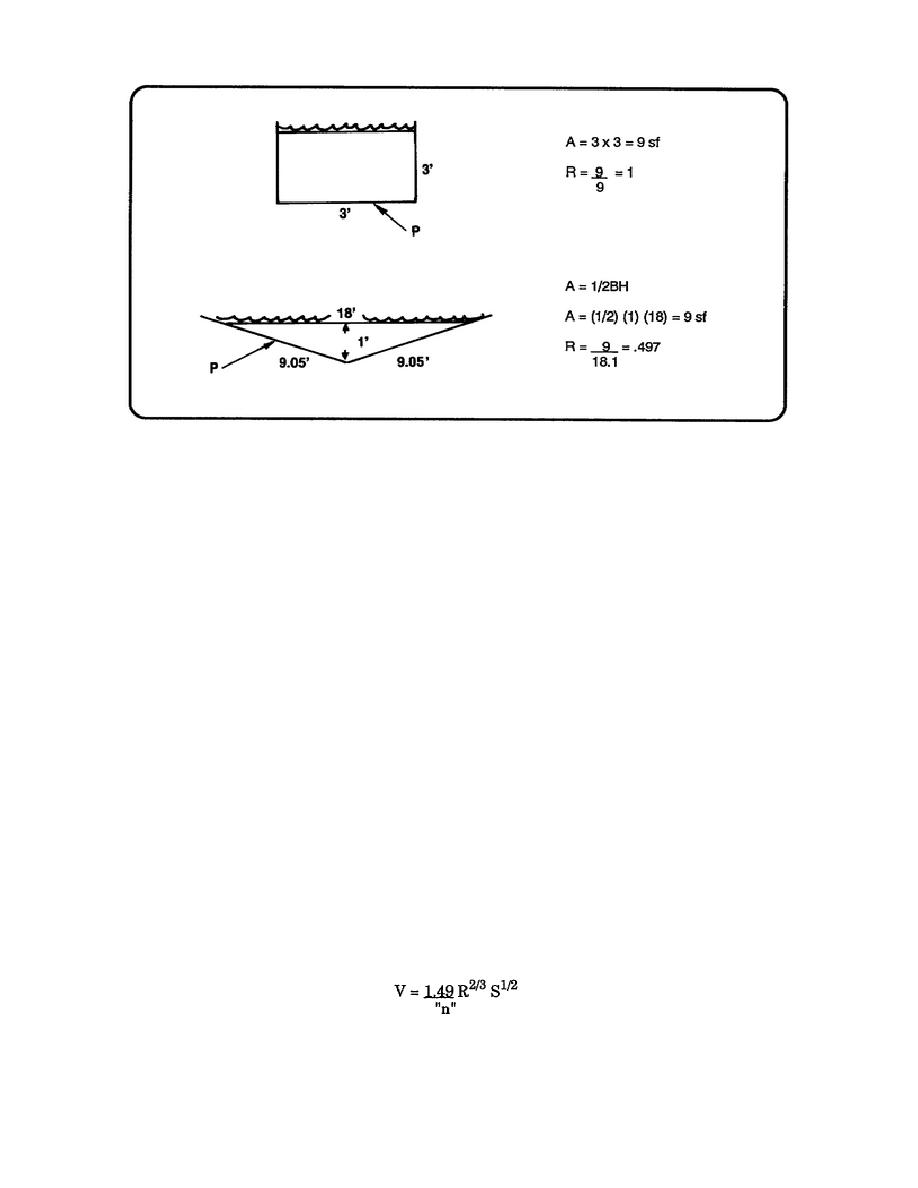
Figure 4-3. Comparing hydraulic radii
In this example we can see that the triangular ditch has a hydraulic radius approximately one-half of the
rectangular ditch and thus would be expected to have a lower velocity since the larger surface area causes greater
PAVEMENT
Another form of channel protection is pavement. Paving the ditch with asphalt or concrete will prevent erosion of
the soil. Due to the low "n" values of pavements, the velocity may increase enough to prevent a problem where
the pavement in the ditch terminates. Special protection may be required to slow down the velocity before
allowing the flow to continue in an earthen channel. Two possible solutions are a stilling basin or riprap.
Additionally, due to pavements' low "n" values, it may be used to increase the velocities if they are too low, thus
preventing deposition.
Some sort of the channel protection is required if the slope of the channel is above 2 percent, and it may be a good
solution for dopes lower than 2 percent with excessive velocities. In any event, channel protection and/r ditch
shape may be used together as they generally are the most effective methods of erosion control. Due to the large
effort of installation, do not use checkdams unless absolutely necessary.
PART F - DESIGNING AN OPEN CHANNEL FOR A GIVEN DRAINAGE AREA
OPEN CHANNEL DESIGN
In Lessons 1 through 3 you learned how to use the Rational Method to obtain Q, the quantity of flow in cfs. Q
allows you to use the first basic equation necessary to open channel design. It is the equation of continuity, Q =
VAw. The second basic equation in Manning's Equation,
EN5465
4-12


 Previous Page
Previous Page
